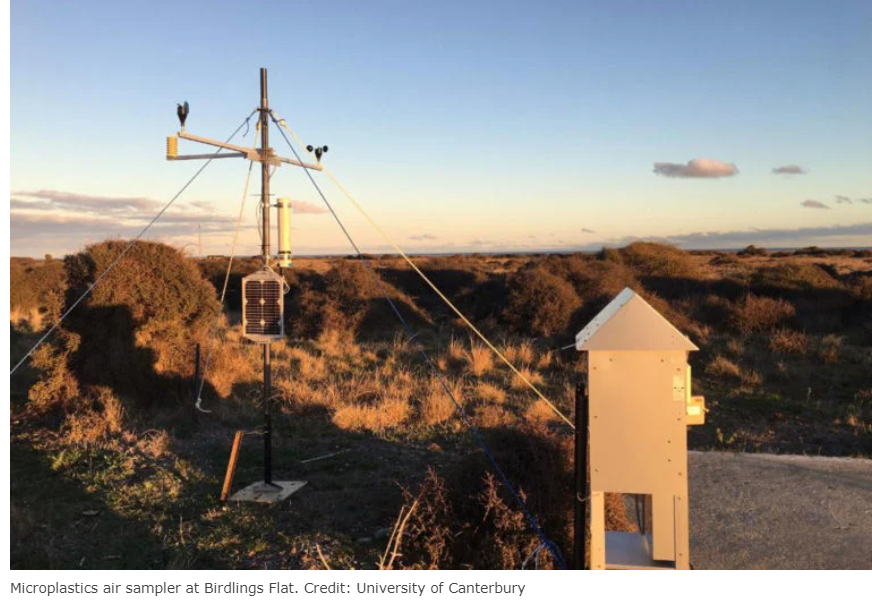The study is the first to investigate the effects of airborne microplastics on climate.
Airborne microplastic particles can spread potential pathogens, and persistent organic pollutants are adsorbed onto their surface. Furthermore, the components adsorbed to the AMP are exposed to U.V. radiation, and oxidation can increase their toxicity to marine biota.
A new study recently discovered that airborne microplastic pollution is likely to affect climate change directly.
Scientists studied two types of microplastics commonly found in the atmosphere- microplastic fragments and fibers. They analyzed how these microplastics interacted with light and used this information in a global climate model to calculate the overall impact of airborne microplastics on Earth’s climate.
University of Canterbury colleagues Dr. Peter Kuma and Professor Sally Gaw said, “Based on our assumptions, which were drawn from the limited number of airborne microplastics studies to date, the impact of airborne microplastics on climate is currently small, as expected.”
“Because they absorb, emit and scatter radiation, like other components of the atmosphere such as dust or greenhouse gases, they can affect the climate by cooling or warming the atmosphere.”
“It is important to know whether airborne microplastics may become a bigger issue in the future if the abundance of microplastics increases. This is likely to happen: approximately 5 billion tons of plastic waste have accumulated in landfills or the natural environment to date, an amount set to double over the next 30 years if current trends in plastic production and waste management continue.”
“Since plastic degrades through age and exposure to light to produce microplastics, we expect microplastics to be present in Earth’s atmosphere for many years to come.”
“Indeed, if the global average concentration increases to values already seen in some megacities, then the effect of airborne microplastics on climate will be significant and potentially similar in size to other atmospheric aerosols routinely included in climate models.”
This new study complements others that studied the effects of microplastics on human health and ecosystems.
“As the first study to link airborne microplastics and climate change, it highlights the widespread nature of microplastic pollution and the potential for it to influence climate on a global scale.”
Article Credit: techexplorist

Pingback: Scientists find microplastics in blood for first time - SLSV - A global media & CSR consultancy network